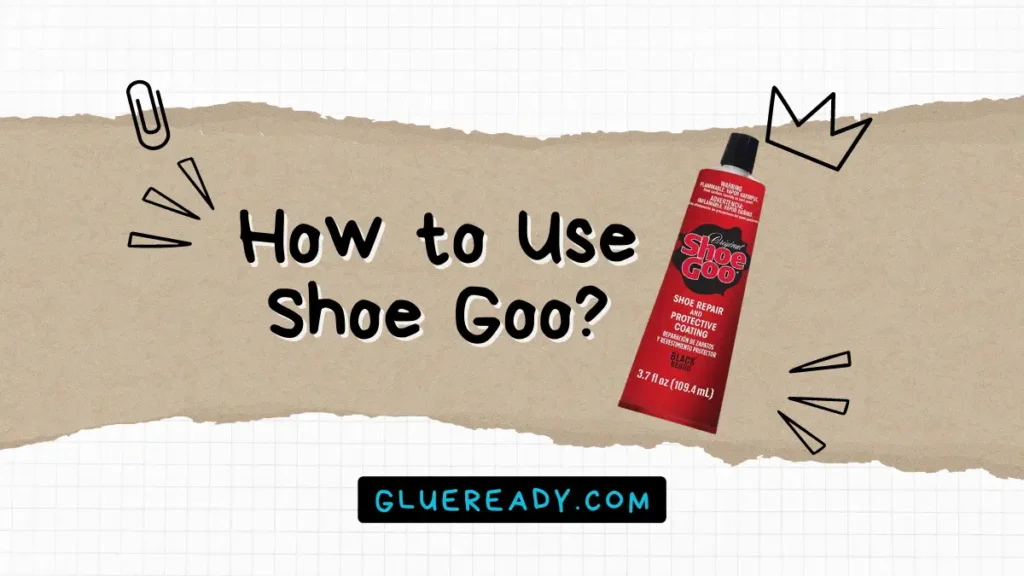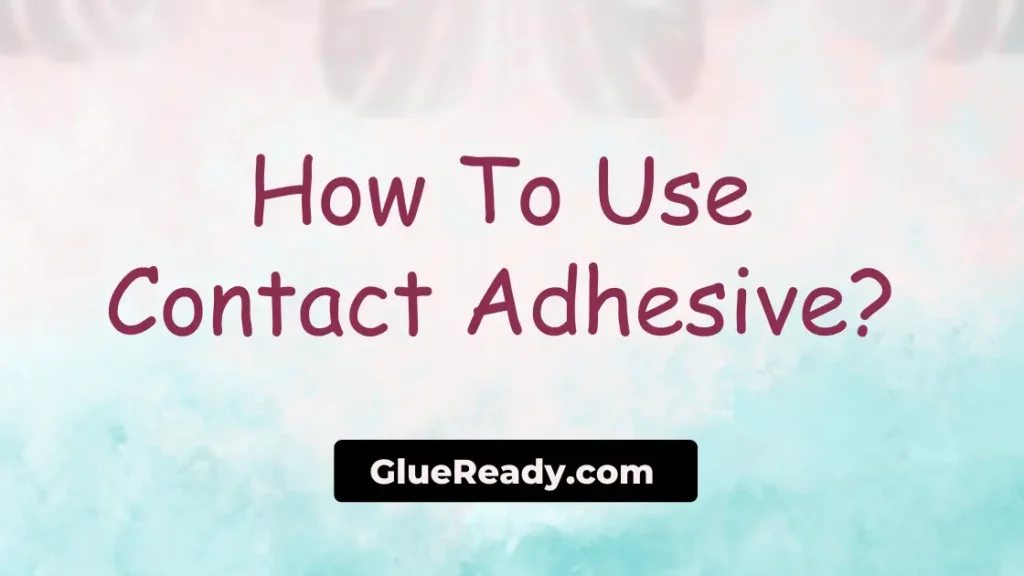How to Make Adhesive Sticky Again?

Adhesives are useful for many purposes, such as sticking notes, labels, stickers, tapes, decals, and more.
However, sometimes they can lose their stickiness over time due to various factors, such as exposure to dust, dirt, oil, moisture, heat, or cold.
When this happens, you might wonder how to make adhesive sticky again without having to buy new ones.
It’s not impossible to restore the stickiness of your adhesives using common household items.
Read More: How Strong Is Hot Glue Actually?
What Are the Benefits of Making Adhesive Sticky Again?
There are several benefits of making adhesive sticky again, such as:
- Saving money and resources by reusing old adhesives instead of buying new ones
- Reducing waste and environmental impact by avoiding throwing away adhesives that can still be used
- Improving the performance and durability of adhesives by restoring their bonding strength and flexibility
- Enhancing the appearance and functionality of items that use adhesives by ensuring they stick properly and securely
How to Make Adhesive Sticky Again?
Adhesives are handy for many projects and tasks, but they can lose their stickiness over time due to various reasons.
However, you don’t have to throw away your old adhesives and buy new ones every time this happens.
You can easily make your adhesives sticky again by following these five simple steps:
Step 1: Clean the Adhesive Surface
The first step to make the adhesive sticky again is to clean the adhesive surface. This is because dirt, oil, grease, or other contaminants can interfere with the adhesive’s ability to bond with the other surface.
To clean the adhesive surface, you will need a clean cloth or sponge, warm water, and mild dish soap.
- Dampen the cloth or sponge with warm water and add a few drops of dish soap.
- Gently wipe the adhesive surface with a cloth or sponge, removing any dirt or residue.
- You’ll need to rinse the cloth or sponge until the adhesive surface is clean.
- Dry the adhesive surface with a towel or let it air dry completely.
Step 2: Heat the Adhesive
The second step to make the adhesive sticky again is to heat the adhesive. This is because heat can reactivate the adhesive by softening it and making it more pliable.
To heat the adhesive, you will need a hair dryer or a heat gun.
- Plug in the hair dryer or heat gun and set it to low or medium heat.
- Hold the hair dryer or heat gun about 6 inches away from the adhesive surface and move it back and forth slowly.
- Do this for about 10 to 15 seconds or until the adhesive feels warm and tacky.
- Don’t overheat the adhesive, since that can damage it or melt it.
Step 3: Apply a Solvent
The third step to make the adhesive sticky again is to apply a solvent. This is because solvents can dissolve the old adhesive and make it sticky again.
To apply a solvent, you will need a clean cloth or cotton swab and rubbing alcohol or water.
- Moisten the cloth or cotton swab with rubbing alcohol or water.
- Rub the solvent on the adhesive surface gently, dissolving any dried or hardened adhesive.
- Wipe off any excess solvent with a dry cloth or cotton swab.
- Let the adhesive dry completely before using it.
Step 4: Apply a New Layer of Adhesive
The fourth step to make the adhesive sticky again is to apply a new layer of adhesive. This is because sometimes the old adhesive might not be enough to provide sufficient stickiness.

To apply a new layer of adhesive, you will need a glue stick, craft glue, or spray adhesive, depending on what you are trying to stick.
- Choose an appropriate type of adhesive for your project. For example, use a glue stick for paper-based items, craft glue for fabric-based items, or spray adhesive for other materials.
- Apply a thin and even layer of adhesive over the old adhesive surface.
- Press the two surfaces together firmly and hold for a few seconds.
- Let the adhesive dry completely before using it.
Step 5: Test the Adhesive
The fifth and final step to make the adhesive sticky again is to test the adhesive. This is because you want to make sure that the adhesive works as expected and provides enough stickiness.
To test the adhesive, you will need your project item and another surface.
- Peel off your project item from its backing if it has one.
- Stick your project item to another surface, such as paper, cardboard, wood, metal, plastic, etc.
- Check if your project item stays in place and does not fall off easily.
- If your project item does not stick well enough, repeat steps 2 to 4 until you achieve satisfactory results.
Does Alcohol Make Adhesive Sticky Again?
Alcohol is not really good for making adhesive sticky again. It can actually make it less sticky or even ruin it. It is good for cleaning things, but not for gluing things.
However, some sources suggest that alcohol can be used to dissolve the old adhesive and make it sticky again by rehydrating it.
This might work for some types of adhesives, but not all. It also depends on the amount and concentration of alcohol used, as too much alcohol can damage the adhesive or remove it entirely.
Know More: How to Use Spray Adhesive on Fabric Effectively?
Does Heat Make Adhesive Sticky?
Yes, heat can make adhesive sticky, depending on the type of adhesive. Some adhesives are heat activated, meaning they will not bond at normal temperatures but become sticky when heated up.
This allows them to form strong bonds with various surfaces. Other adhesives are pressure sensitive, meaning they are sticky at room temperature, but can be enhanced by heating them up.
This helps them to flow better and adhere more firmly.
However, heat can also have negative effects on some adhesives, especially if they are exposed to high temperatures for a long time.
Heat can cause adhesives to dry out, harden, crack, or lose their elasticity and cohesion.
Therefore, it is important to store and use adhesives according to the manufacturer’s instructions and avoid exposing them to extreme heat or cold.
How Do You Keep Adhesive from Drying Out?
There are a few ways to keep adhesive from drying out, depending on the type and packaging of the adhesive.
Here are some general tips:
Put the lid back on after using the adhesive. This will prevent air and moisture from getting in and affecting the adhesive’s properties. Make sure the lid is tight and secure.
Store the adhesive in a cool, dry, and dark place. Avoid direct sunlight, heat sources, or humid environments that can alter the adhesive’s composition or cause it to harden prematurely.
Clean the nozzle or spout of the adhesive after each use. Remove any excess adhesive or residue that might clog or dry up the opening. You can use a cloth, a cotton swab, or a small drill bit to clear the nozzle.
Use a sealant or a cover to protect the nozzle or spout from air exposure. You can use rubber bands, gloves, plastic wrap, or other materials to create a tight seal around the opening. You can also use products like AirTite or Glad Press n’ Seal to cover the nozzle.

Do not transfer the adhesive to another container. The original packaging is designed to preserve the adhesive’s quality and performance. Transferring the adhesive to another container might expose it to air or contaminants that can affect its stickiness.
Final Thoughts
I hope this article has helped you learn how to make adhesive sticky again in five simple steps.
By following these steps, you can save money and time by reusing your old adhesives instead of buying new ones.
Keeping your adhesives cool, dry, and away from direct sunlight can also keep them sticky.







